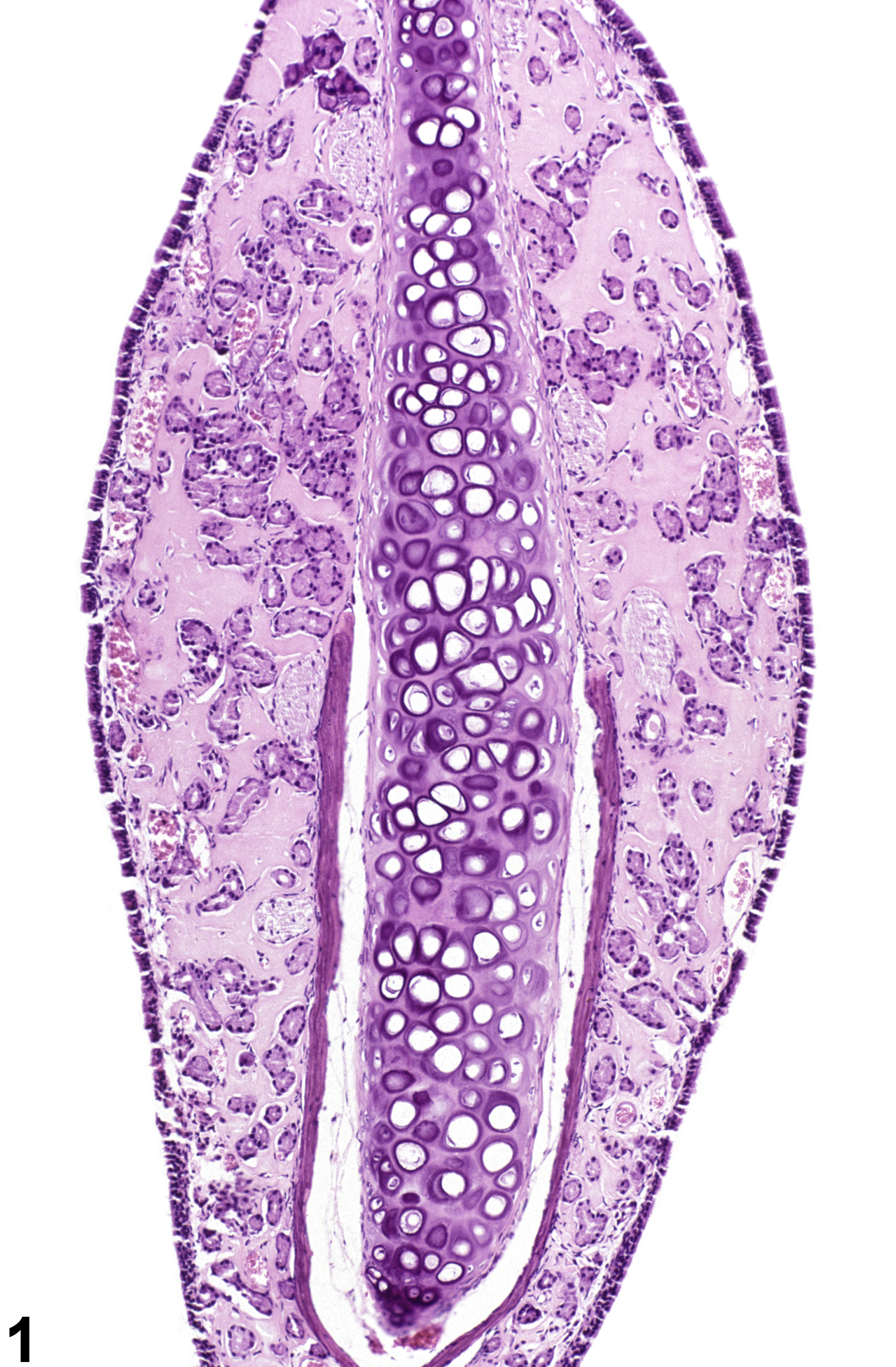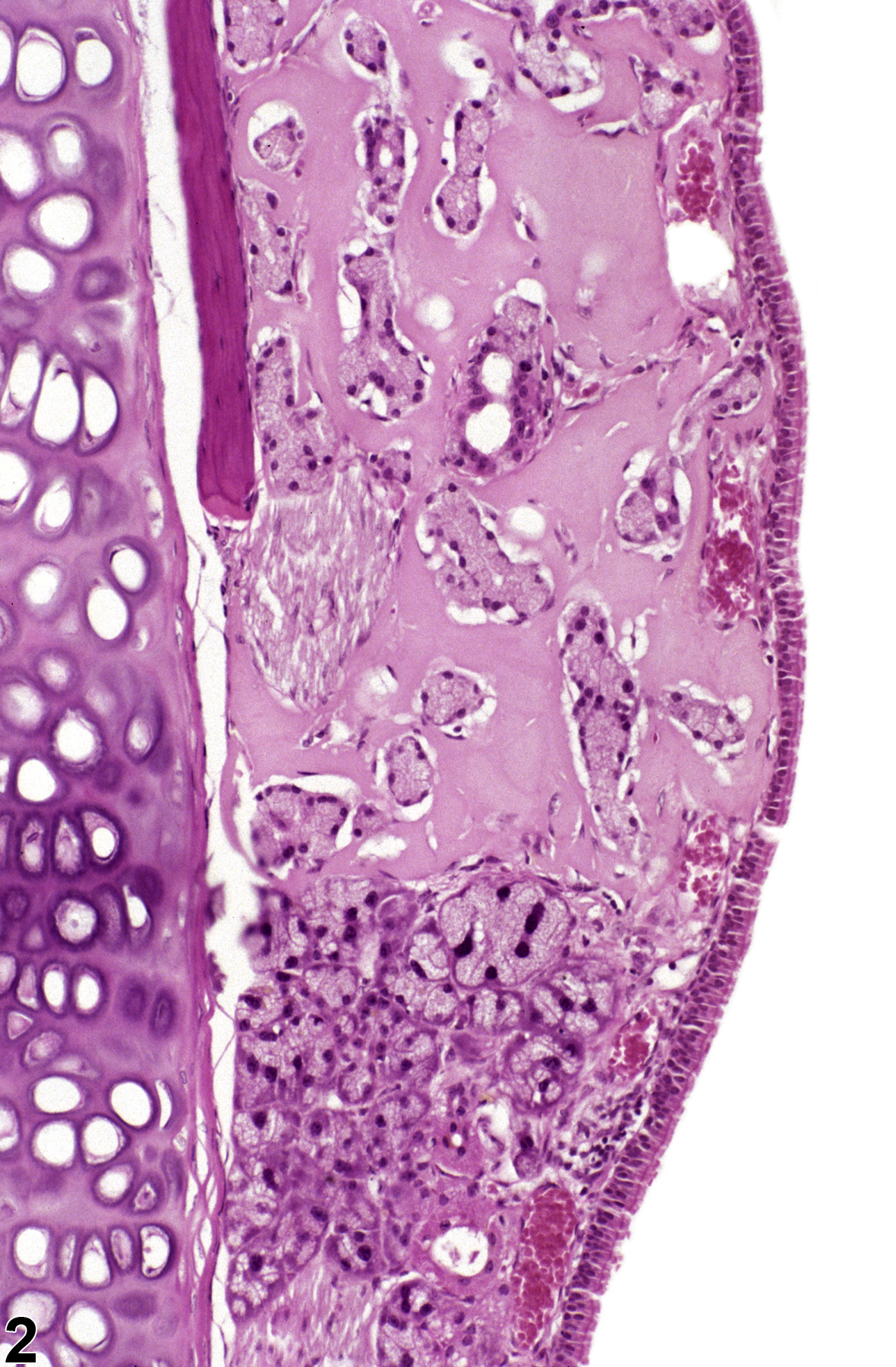Respiratory System
Nose - Eosinophilic Material
Narrative
Nose - Eosinophilic material is a general term for any amorphous, eosinophilic material that may accumulate in the submucosa in the nasal cavity, including amyloid. A common site for accumulation of eosinophilic material is the ventral nasal septum just dorsal to the vomeronasal organ (Figure 1). This material was previously thought to be amyloid due to its morphologic appearance, but several recent publications by Doi et al. (2007, 2009, 2010) have shown that this material is not, in many cases, amyloid but consists of collagen and complex carbohydrates that may be produced by nasal gland epithelial cells that is Congo red negative. In some cases, however, amyloid deposition is relatively common and can be found in the nasal cavity.
Doi T, Kokoshima H, Kanno T, Sato J, Wako Y, Tsuchitani M, Matsui T. 2010. New findings concerning eosinophilic substance deposition in mouse nasal septum: Sex difference and no increase in seniles. Toxicol Pathol 38:631-636.
Abstract: https://www.ncbi.nlm.nih.gov/pubmed/20448090Doi T, Kotani Y, Kokoshima H, Kanno T, Wako Y, Tsuchitani M. 2007. Eosinophilic substance is "not amyloid" in the mouse nasal septum. Vet Pathol 44:796-802.
Abstract: https://www.ncbi.nlm.nih.gov/pubmed/18039892Doi T, Kotani Y, Kokoshima H, Kanno T, Wako Y, Tsuchitani M, Matsui T. 2009. Deposition process of eosinophilic substance in mouse nasal septum. J Vet Med Sci 71:931-935.
Abstract: https://www.ncbi.nlm.nih.gov/pubmed/19652481Herbert RA, Leninger JR. 1999. Nose, larynx, and trachea. In: Pathology of the Mouse: Reference and Atlas (Maronpot RR, ed). Cache River Press, Vienna, IL, 259-292.

Nose - Eosinophilic material in a male B6C3F1/N mouse from a chronic study. There is bilateral accumulation of an eosinophilic material in the lamina propria of the ventral nasal septum.



